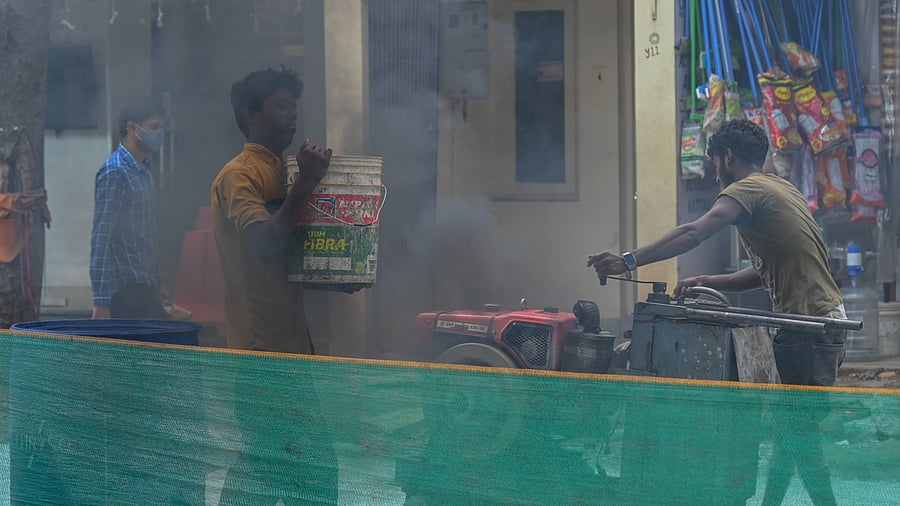
Air pollution in Bengaluru is doing more than making us cough and wear masks — it is silently damaging the buildings we live and work in every day.
Credit: DH Photo
Bengaluru: Air pollution in Bengaluru is doing more than making us cough and wear masks — it is silently damaging the buildings we live and work in every day.
A recent study, published in Nature, studied air quality from 2013 to 2021 across 12 key locations in the city — including places like Peenya, Central Silk Board, Whitefield and KR Market.
It has revealed that fine dust particles in the air, known as Particulate Matter (PM), namely PM10 and PM2.5, are not just harmful to our health, but are also eating away at the concrete and steel in our buildings.
These tiny particles mostly come from traffic fumes, construction dust, and industrial smoke. PM is small enough to embed in concrete, corrode steel reinforcements and significantly reduce a building’s lifespan. PM is a mix of solid and liquid particles suspended in the air, and can include sulphates and nitrates that are known to corrode concrete and steel after long exposure.
The research covered 12 locations in total: Whitefield (ITPL), Mysuru Road (AMCO Batteries), Yelahanka (Rail Wheel Factory), Peenya (Swan Silk Ltd and Urban Eco Park), KR Market (Victoria Hospital), Yeswantpur, Domlur, Hosur Road (Central Silk Board), Jayanagar (Children’s Hospital), Khajisonnanahalli, and Kammanahalli (Banaswadi Police Station).
To understand how bad things really are, researchers from the Manipal Institute of Technology and Nagarjuna College of Engineering and Technology tested both old and new buildings in the city’s most polluted areas. What they found was worrying: older buildings had weaker concrete, more cracks and higher chances of steel corrosion.
At Central Silk Board, for example, an 18-year-old building had significantly lower strength and showed signs of serious damage due to pollution exposure — while a nearby newer building was in much better shape.
The study also highlighted how pollution levels fluctuate daily and seasonally. PM levels tend to peak during morning and evening rush hours, and concentrations are highest during the summer and winter, when dry weather and stagnant air trap pollutants closer to the ground. In contrast, monsoon rains help wash away particles, resulting in the cleanest air of the year.
The researchers built a smart prediction model that can forecast air quality with about 93% accuracy. By using this model, city planners and residents can prepare for days when pollution is expected to spike and take action — like avoiding outdoor activities, increasing indoor ventilation, or even improving building maintenance schedules.